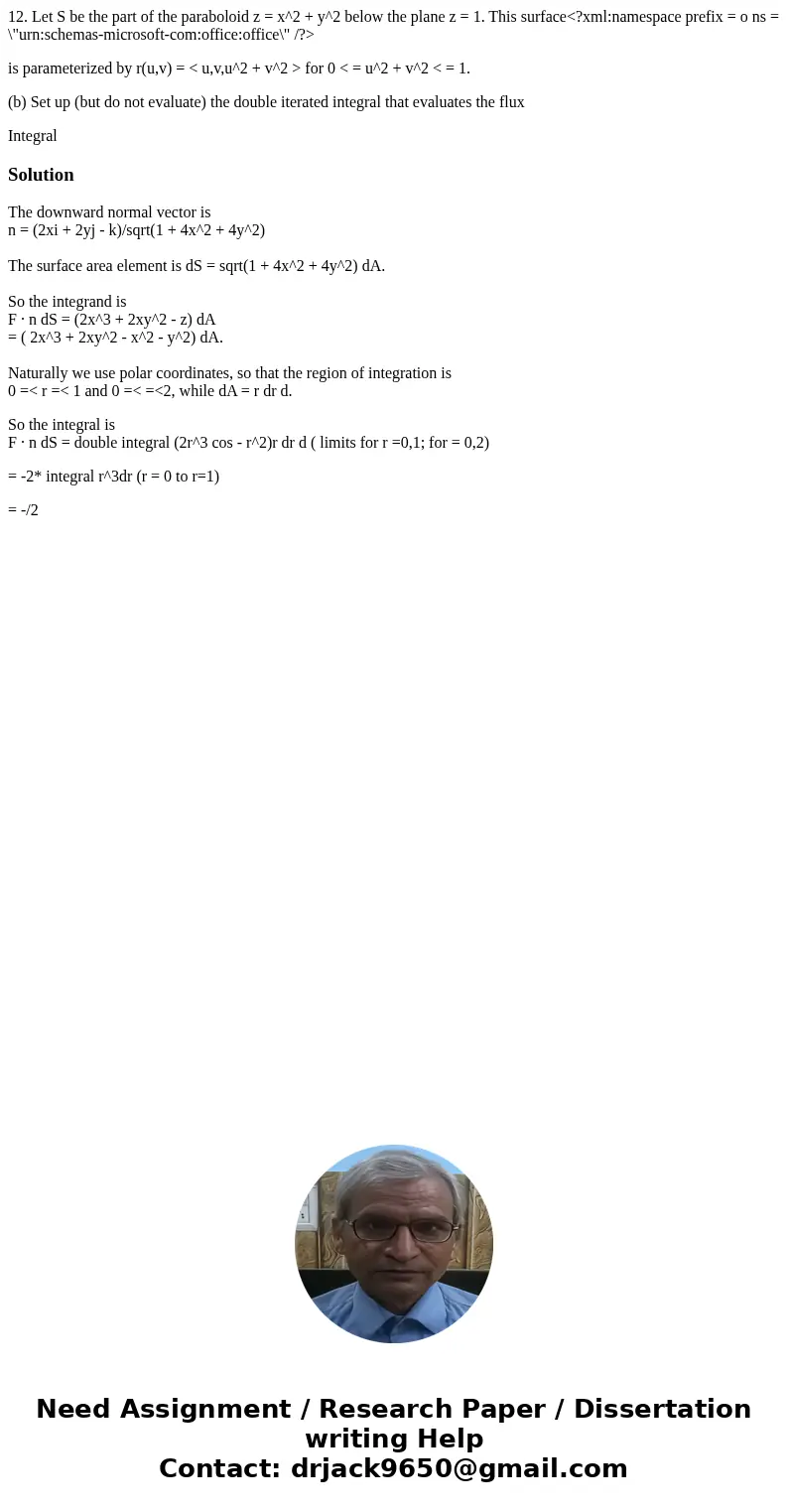12 Let S be the part of the paraboloid z x2 y2 below the p
12. Let S be the part of the paraboloid z = x^2 + y^2 below the plane z = 1. This surface<?xml:namespace prefix = o ns = \"urn:schemas-microsoft-com:office:office\" /?>
is parameterized by r(u,v) = < u,v,u^2 + v^2 > for 0 < = u^2 + v^2 < = 1.
(b) Set up (but do not evaluate) the double iterated integral that evaluates the flux
Integral
Solution
The downward normal vector is
n = (2xi + 2yj - k)/sqrt(1 + 4x^2 + 4y^2)
The surface area element is dS = sqrt(1 + 4x^2 + 4y^2) dA.
So the integrand is
F · n dS = (2x^3 + 2xy^2 - z) dA
= ( 2x^3 + 2xy^2 - x^2 - y^2) dA.
Naturally we use polar coordinates, so that the region of integration is
0 =< r =< 1 and 0 =< =<2, while dA = r dr d.
So the integral is
F · n dS = double integral (2r^3 cos - r^2)r dr d ( limits for r =0,1; for = 0,2)
= -2* integral r^3dr (r = 0 to r=1)
= -/2

 Homework Sourse
Homework Sourse